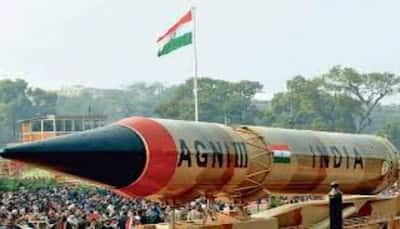New Delhi: There was not any fanfare. No grand announcement from the government. No breaking headlines. But sometime between last year and this one, India quietly pulled ahead in a race it has long been part of – one that rarely gets spoken of openly.
For the first time, India is believed to hold more nuclear warheads than Pakistan.
According to data gathered by international researchers monitoring global armaments, India now has around 180 nuclear weapons. That is about eight more than what it held the year before. Meanwhile, Pakistan has stayed steady at 170.
This change may seem small on paper, but it carries weight. Both countries have walked a delicate line for decades, shaped by wars, ceasefires and mutual deterrence. Numbers alone do not define strategy, but they do tell a story.
Behind this quiet leap is a shift in the kind of missiles India is building.
In labs and testing fields far from public view, Indian scientists have been working on something newer, lighter, faster and more capable of staying hidden until the moment it is needed.
The latest additions include the Agni-P and Agni-5, both part of India’s long-range strike options. They are mobile, harder to detect and designed to be stored with warheads already attached and ready to launch if the order ever comes.
One of them, the Agni-5, stretches India’s reach far beyond the subcontinent. With a range of more than 5,000 kilometers, it can reportedly reach deep into Asia, parts of Europe and northern Africa. What is more, it may soon carry what is known as MIRVs – multiple warheads on a single missile (MIRVs) – each programmed to hit different targets.
This kind of system is not common. It is a technology seen mostly in the arsenals of the United States, Russia and China.
Though officials have not confirmed if the MIRV-equipped version of Agni-5 is fully operational, recent tests suggest India is inching closer. And that development could give Indian strategic forces a sharp edge not only in range but in complexity. A single launch could now mean multiple incoming threats for any adversary trying to intercept them.
Even the Agni-P, designed for shorter distances, is no less important. It is meant to replace older models, but what makes it stand out is how quickly it can be moved and fired.
Stored in sealed canisters, these missiles can be transported across roads without anyone knowing what is inside. When it comes to second-strike capability, survivability matters more than numbers.
In the background of all this, China has been expanding at a pace that has caught global attention. From 500 nuclear warheads last year, China’s estimated stockpile has grown to 600 in just 12 months. And if construction continues at its current pace – across deserts and remote mountain areas – it could rival the United States or Russia in the number of long-range missiles it fields within a decade.
Pakistan, meanwhile, has focused on refining battlefield-range systems like the Nasr and Ababeel. But for now, its nuclear count appears unchanged.
While India’s nuclear policy remains centered around “credible minimum deterrence”, its investments suggest a clear intent to stay prepared for evolving threats. The idea of having enough firepower is to retaliate but never to strike first.
For now, the numbers remain modest. But with aging agreements due to expire and no new treaties on the horizon, the region may be entering a new phase – one shaped less by war and more by silent preparation.
Stay informed on all the , real-time updates, and follow all the important headlines in and on Zee News.








